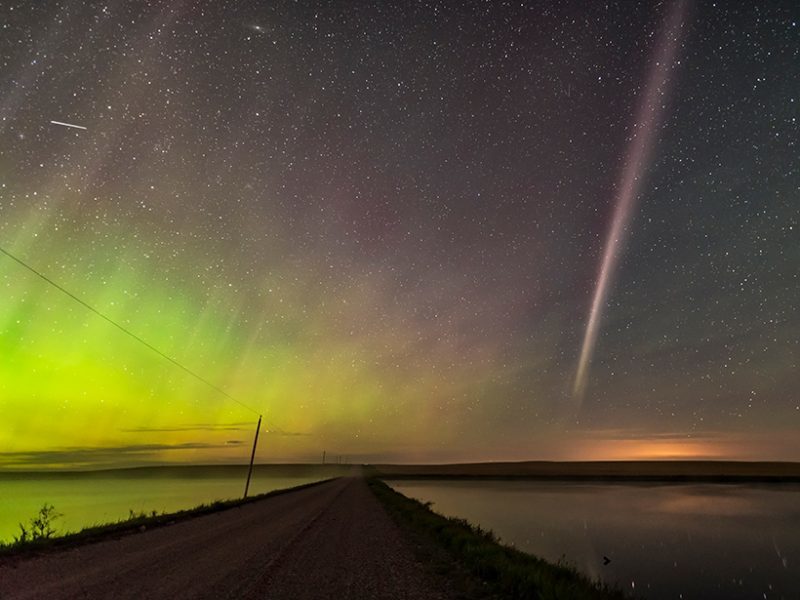
To better characterize STEVE, Gallardo-Lacourt et al. conducted the first statistical analysis of this optical phenomenon. Using NASA's Time History of Events and Macroscale Interactions during Substorms (THEMIS) ground-based All-Sky Imager array and the Canadian Space Agency's Redline Geospace Observatory (REGO) databases, the team identified and analyzed optical data from 28 STEVE events that occurred between December 2007 and December 2017.
According to the results, STEVE is quite narrow, averaging only about 20 kilometers in the north-south direction, but typically stretches more than 2,100 kilometers east-west across the sky. The events usually last about an hour, and all but one shifted closer to the equator throughout its duration, motion the authors suggest could be attributed to the expansion of the high-latitude convection zone toward the equator.
To determine the geomagnetic conditions that favor STEVE's formation, the team analyzed a variety of space weather indices and geophysical parameters for the hours surrounding each event. The results indicate that STEVE typically occurs about 1 hour after the inception of substorms (violent disturbances during which energy from Earth's magnetic tail is injected into the ionosphere's high latitudes), especially those with long expansion phases. This study represents an important step toward understanding the nature and origin of this interesting phenomenon, which has the potential to offer fresh insights into Earth's complex magnetospheric system. (Journal of Geophysical Research: Space Physics, https://doi.org/10.1029/2018JA025368, 2018)
Source: Journal of Geophysical Research: Space Physics



Reader Comments
And we would need to remember that this recorded/remembered history is but the last 6+ thousand years of 200 thousand years of modern human existence, not to mention the 6 million years of more distant human ancestors, to put 'new' phenomena in perspective.
Why are the streaks appearing now?